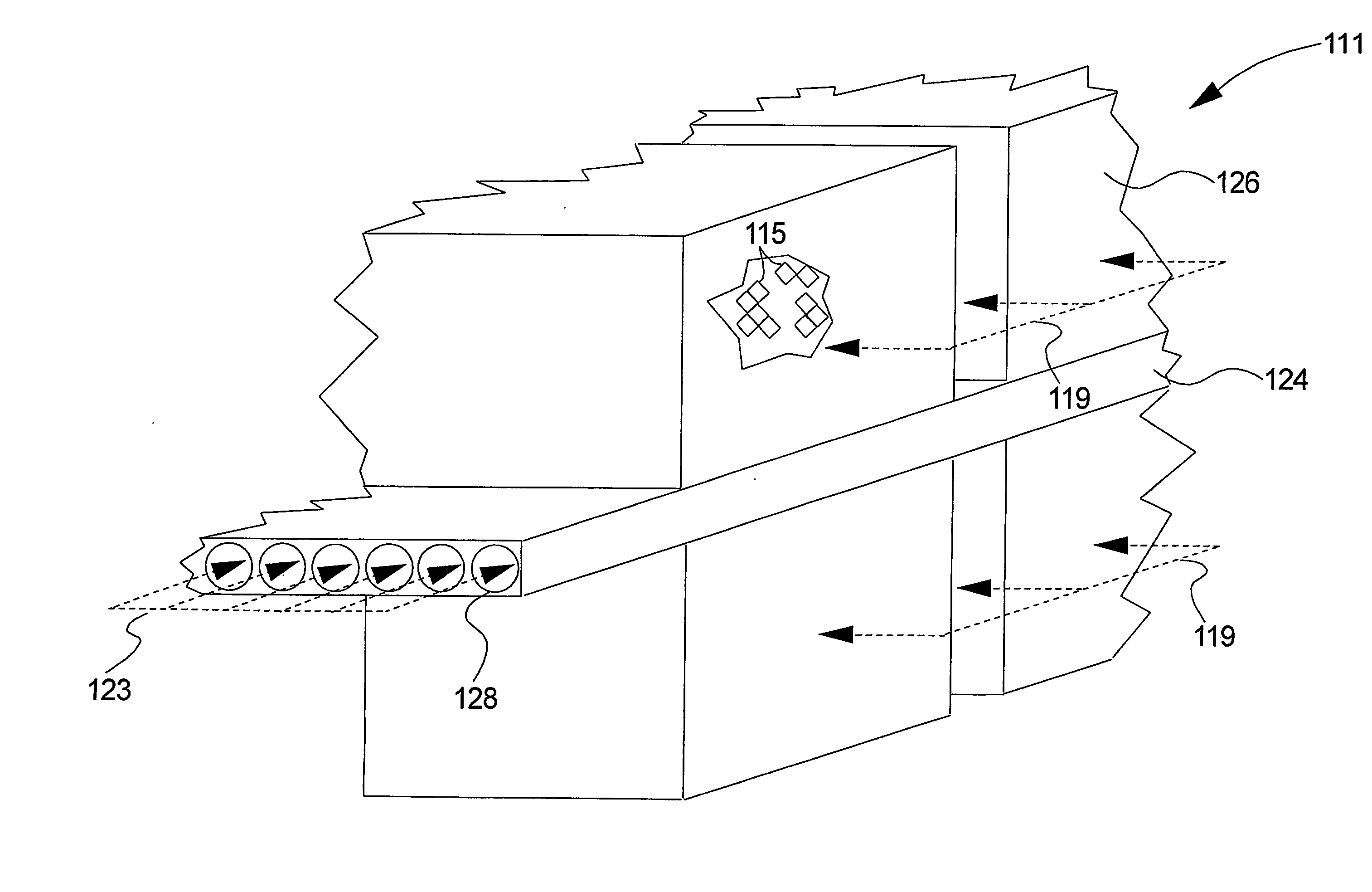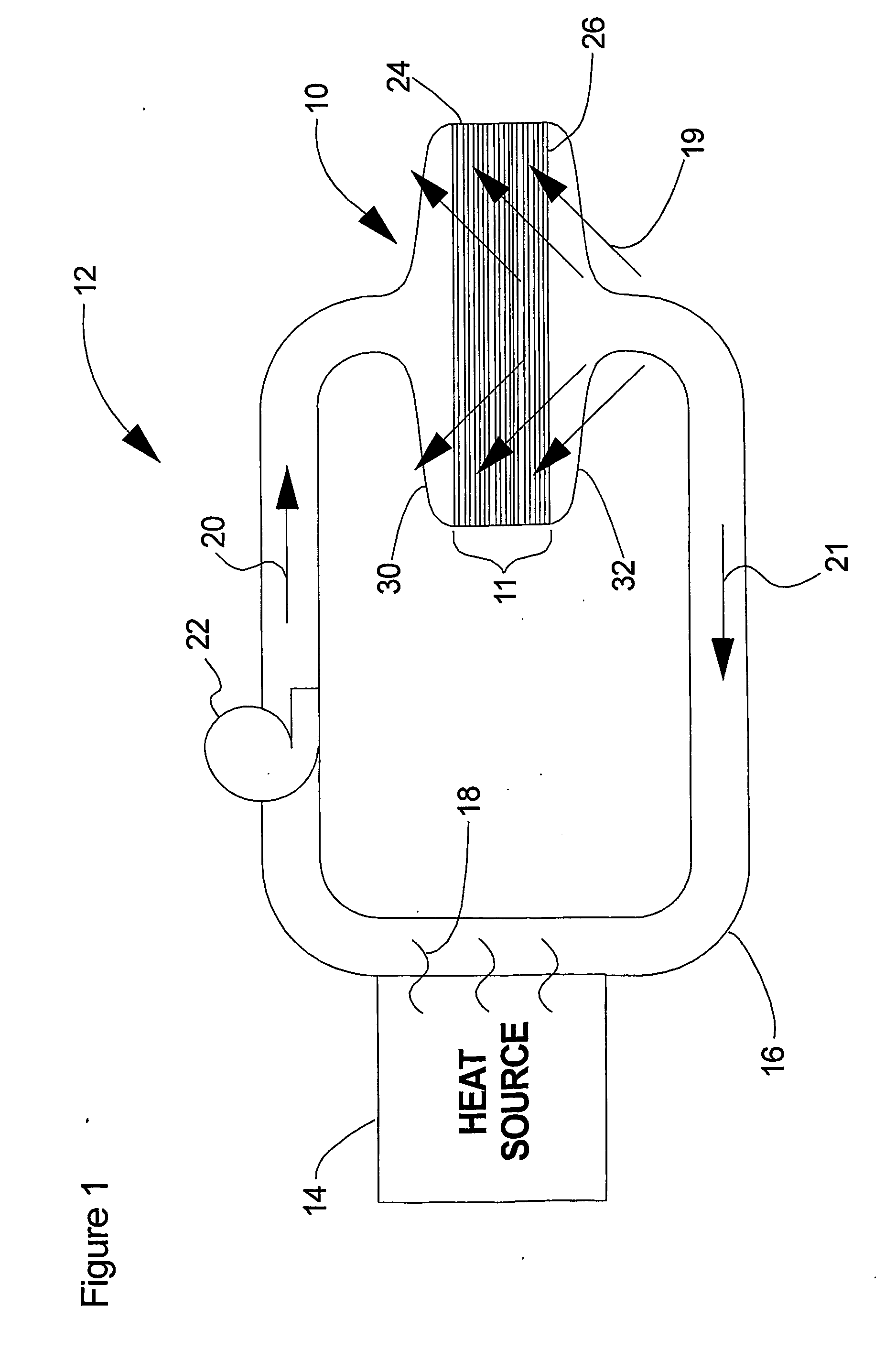Carbon nanotube heat-exchange systems
a heat exchange system and carbon nanotube technology, applied in indirect heat exchangers, electrochemical generators, lighting and heating apparatuses, etc., can solve the problems of large heat exchange system, and large cumbersomeness
- Summary
- Abstract
- Description
- Claims
- Application Information
AI Technical Summary
Benefits of technology
Problems solved by technology
Method used
Image
Examples
Embodiment Construction
[0017] Carbon nanotube heat-exchange system 10 (FIG. 1) and method for producing the same is shown and described as it may be used in a cooling system 12 according to preferred embodiments of the invention. Briefly, heat-exchange systems 10 dissipate heat produced at a heat source 14 (e.g., an internal combustion engine). A cooling fluid may be circulated through a coolant loop 16 in and / or around the heat source 14 so that the fluid absorbs heat from the heat source 14. The heat-exchange system 10 is provided in thermal contact with the fluid circulating through the coolant loop 16 and with an external medium 19 (e.g., air). As the cooling fluid flows through the heat-exchange system 10, heat is transferred from the cooling fluid to the external medium. The cooling fluid may then be recirculated through the cooling loop 16 or discharged to the environment. Alternatively, the heat-exchange system 10 of the present invention may be provided in direct contact with the heat source 14, ...
PUM
 Login to View More
Login to View More Abstract
Description
Claims
Application Information
 Login to View More
Login to View More - R&D
- Intellectual Property
- Life Sciences
- Materials
- Tech Scout
- Unparalleled Data Quality
- Higher Quality Content
- 60% Fewer Hallucinations
Browse by: Latest US Patents, China's latest patents, Technical Efficacy Thesaurus, Application Domain, Technology Topic, Popular Technical Reports.
© 2025 PatSnap. All rights reserved.Legal|Privacy policy|Modern Slavery Act Transparency Statement|Sitemap|About US| Contact US: help@patsnap.com



